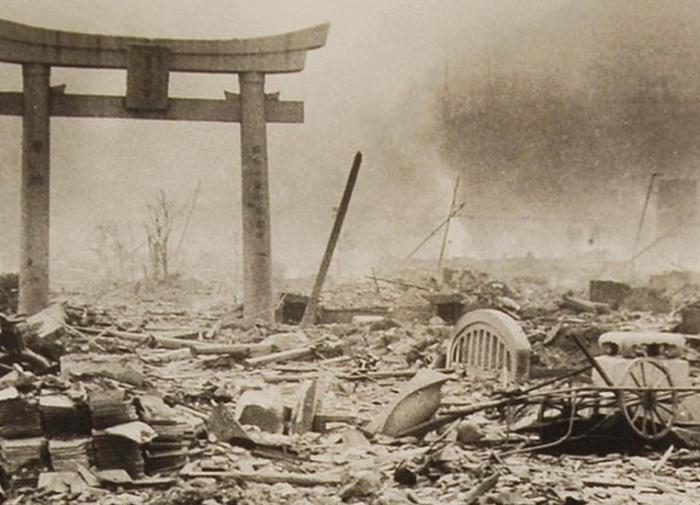Ashes of Hiroshima and Nagasaki will remain on US flag forever
The bombing that US pilots conducted at the very end of World War II, killed about 200,000 people died, while Japan says that the death toll is much higher - more than 500,000. Those who survived the nuclear attack later died of radiation exposure.

Some sources, especially in the West, say that it was the fear of atomic bombings that made Emperor Hirohito announce the unconditional surrender of militaristic Japan and accept the conditions of the Potsdam conference.
This fact is still wide open to criticism and is still beneficial to the Americans against the background of their persistent myth-making and attempts to rethink the history of World War II.
It should be noted that more than 60 cities were destroyed in Japan as a result of air raids in 1945.
The tactics of incendiary bombing at nighttime led to extensive self-sustaining fires and mass casualties: in Tokyo alone about 100,000 people were killed as a result of Operation Meeting House in March 1945.
However, such extensive civilian casualties did not affect the determination of the Japanese leadership to continue the war. There was an attempted coup made in order to prevent the broadcast of the emperor's appeal to the people.
In the ranks of the armed forces, opponents of surrender refused to stop resistance. It was only USSR's entry into the war with Japan and the nearly lightning rout of the Kwantung Army in the Manchurian strategic offensive operation that made it possible to force the Japanese troops to lay down their arms.
Hibakusha, or those affected by the bomb
The long-term consequences of the bombing of Hiroshima and Nagasaki led to the emergence of a special group of people known as hibakusha - the people who survived the nuclear attacks.
This category of people includes not only the Japanese, who had found themselves within several kilometers of the epicenter at the time of the explosion and had thus been exposed to radioactive precipitation, but also the children of Hibakusha women. For decades, many in Japan had been trying to avoid Hibakusha people not to have sick children with them.
The state actively supports the victims of the the atomic bombings. Currently, there are more than 150,000 survivors, mainly living in Japan. Many Hibakusha people and their family members take part in educational activities, advocating against nuclear power. Their appeal to refuse from the use of nuclear power is undoubtedly justified from the point of view of humanitarian consequences.
In addition, many in Japan still believe that the ashes of Hiroshima and Nagasaki will forever remain on the flag of the United States.
The use of nuclear bombs against Japan still remains a matter of controversy. Many experts are confident that the main reason behind those bombings was a desire of Washington, which at that time was the monopoly owner of nuclear technologies, to demonstrate its military power to the whole world.
In 1949, the USSR held a nuclear bomb test at the Semipalatinsk nuclear test site. In 1952, 1960 and 1964, the UK, France and China blew up their nuclear bombs too.
These countries are the founders of the Treaty on the Non-Proliferation of Nuclear Weapons, which came into force in 1970. According to the treaty it, nuclear powers pledged not to transfer nuclear technologies and to work for the complete elimination of their nuclear arsenals.
India, Pakistan, North Korea and Israel also carried out nuclear and thermonuclear tests, but they never signed the Treaty.
- The current system of global security is based primarily on denial of massive influence and limitation of means and goals in the event of a conflict between nuclear powers.
- The creation of non-nuclear powerful high-precision arms, as well as tactical nuclear warheads, is a way of moving away from the traditional understanding of effective nuclear deterrence, which lowers the threshold for the use of certain types of arms.
- Today, the nuclear deterrence system makes it possible to prevent the escalation of local armed conflicts and regional wars into large-scale ones.
The parity US-Russia correlation of nuclear warheads neutralizes the critical imbalance in conventional weapons.
China is significantly inferior to these countries both quantitatively and qualitatively, righteously appealing to the need to equalize the number of nuclear warheads and join the system of treaties about the reduction of offensive arms of other nuclear countries.
The experience of atomic bombings has shown that a large-scale military conflict with the use of nuclear weapons may lead to the destruction of human civilization. Therefore, the countries possessing nuclear weapons carry a special responsibility for maintaining stability in the world.
Subscribe to Pravda.Ru Telegram channel, Facebook, RSS!


